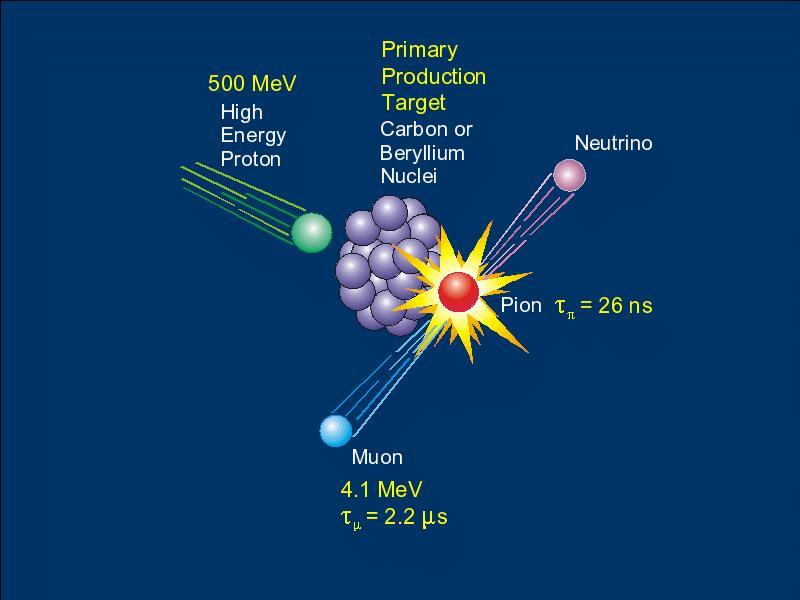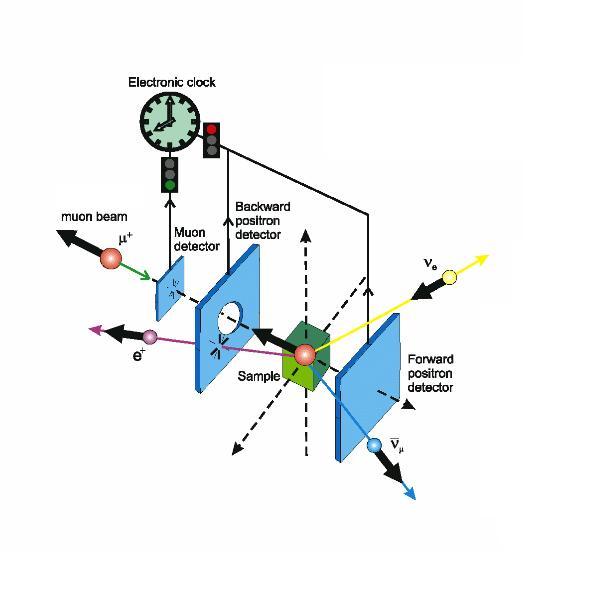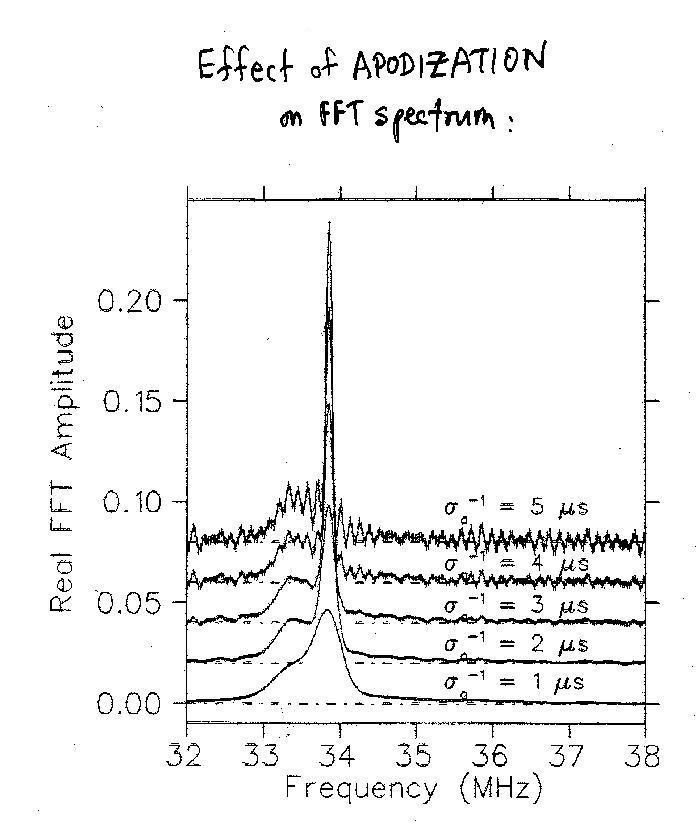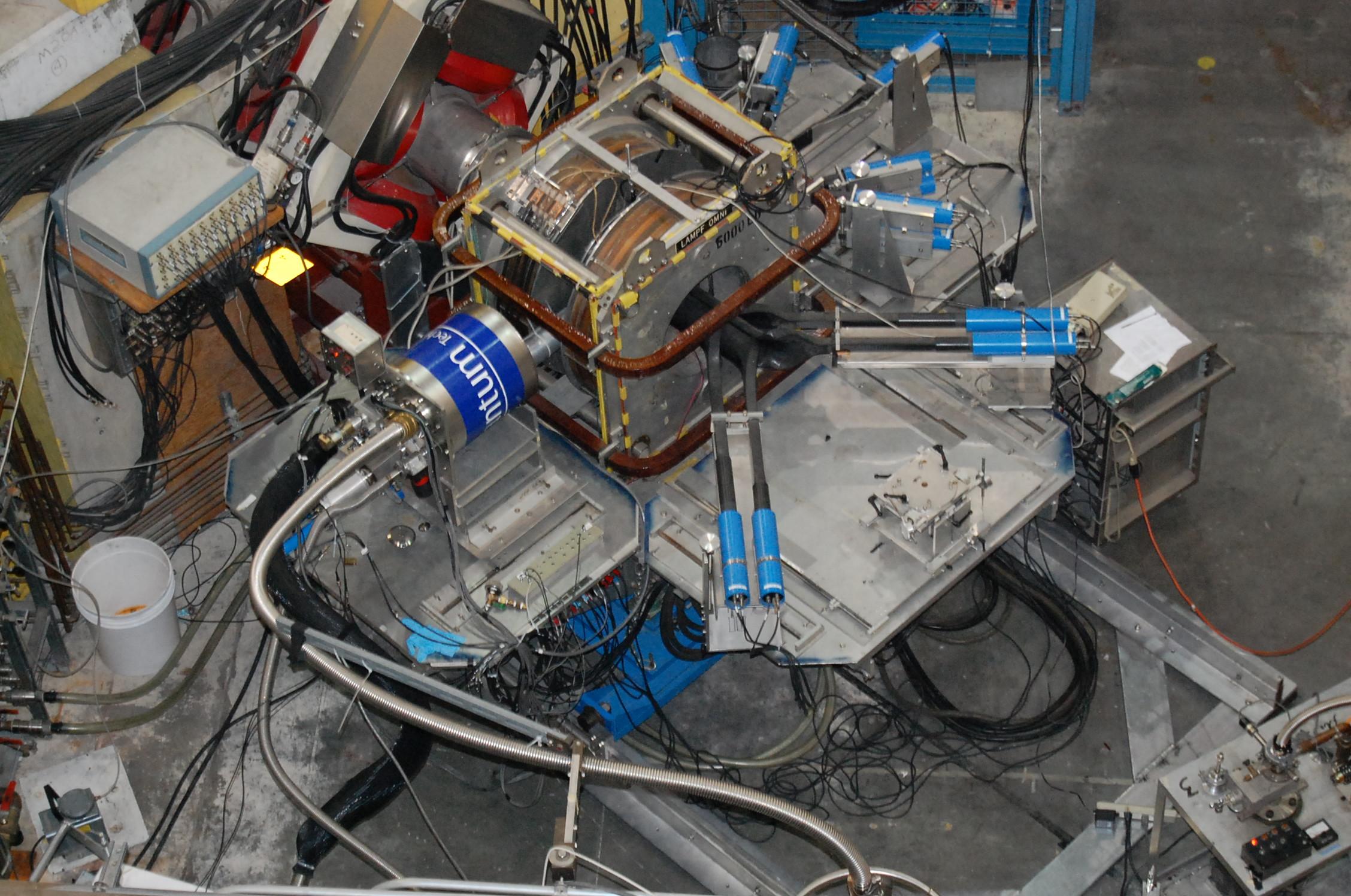Last week I was introduced to TRIUMF and for this past week I have been introduced to the M20 beamline. Over the course of this week I've learned what muons and µSR are. I have seen the data room for an experiment. I've seen how essential calculus is to physics research. And I have received nothing but hospitality from the TRIUMF staff. It's been another fine week at TRIUMF.
The counting room of M20 has been both a place of great professional dedication and messiness (quite like my room at home!). The M20 beamline is connected to the cyclotron. In the cyclotron, subatomic (very tiny) particles are accelerated to great speeds. These very fast particles (which happen to be protons) are then smashed into "target" particles (Carbon or Berylium nuclei) to create new particles: pions.
Figure 1: An illustration of how muons are formed.
Pions are very unstable particles, so they decay (break apart) after 26 nanoseconds (a nanosecond is a billionth of a second). The particles they decay into are muons and neutrinos. The M20 beamline, using powerful magnets, directs the muons to the experiment.
Figure 2: An illustration of muon probing.
In the experiment, the muon passes through a thin detector before entering into the material. The muon detector starts a timer. The muon moves on into the material (called a "sample" in Figure 2). In the material it decays (remember, decay is breaking apart). It decays into two types of neutrinos (very, very, tiny subatomic particles) and a positron (a positively charged electron). The positron is then detected by one of two detectors, which stops the timer. This process is repeated about 10 million times in a single measurement!
The muon has a magnetic moment (a measure of the strength and direction of its magnetism). This moment is very sensitive to effects of other sources of magnetic fields (like the type possessed by the material the muon's probing). Depending on the pattern the positrons form by hitting the detectors, physicists can find out how the muon's magnetic moment was affected by the material's internal magnetic fields. They then can deduce the nature of the material's magnetic state.
This is how, using muons, physicists discover facts about other materials. And working with different materials, using muons to discover their properties, is what M20's doing.
Over the past week, I've learned so much about µSR thanks to clear explanations from Graeme Luke and an informative website made by Jess Brewer, one of µSR's pioneers.
Throughout my week at the M20 site I've seen how important calculus is to the work done here. Much of the data from experiments are represented in graphs understandable only with a decent grasp of calculus. As a student who graduated from Grade Eleven in June, I have yet to take calculus. The relevance of continuous graphs has motivated me to get somewhat of a head start on learning calculus: I've used this website as basic study material and my mathematically razor sharp roommate, Jeremy, has clarified any misunderstandings I have with the content.
Figure 3: An example of a nearly continuous graph. It's one of many used in µSR.
The staff of TRIUMF, as always, have been very kind. The personnel at TRIUMF's Cafe are very helpful. Jill Seeley (the receptionist) continues to make me feel at home here. Meghan Magee (from the communications department) and Jennifer Kaban (Web Publishing Director) have been very helpful at setting up my first web post on this site. Jim Hanlon extended a helping hand to me this week. And the researchers of M20 (TRIUMF High School Fellow and roommate, Jeremy included), especially Graeme Luke, have been nothing but generous to me.
This week at TRIUMF, in the wonderful world of µSR, has been nothing but a great experience. I'm optimistic that such a great time at TRIUMF will continue, albeit in a new way.
Figure 4: The very end of the M20 beamline, showing the LAMPF Spectrometer
(where µSR experiments are conducted).
By: Dylon Martin




